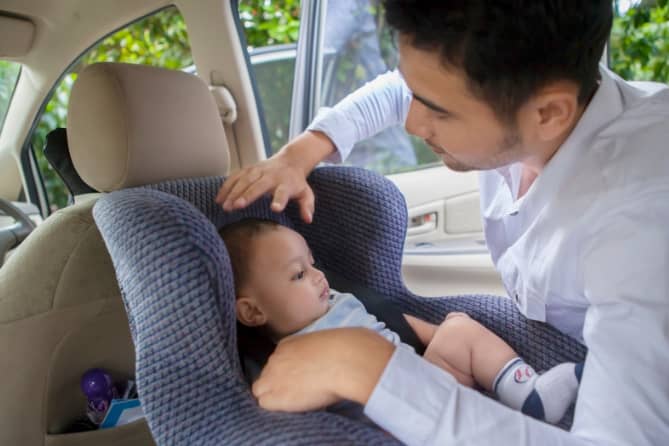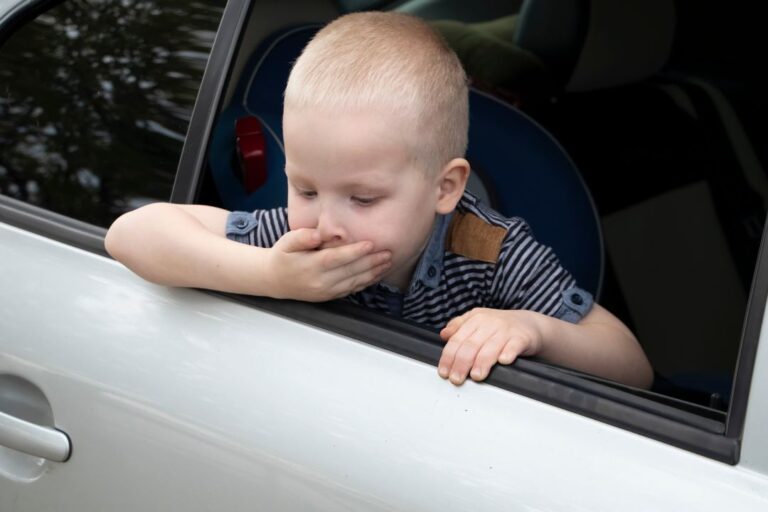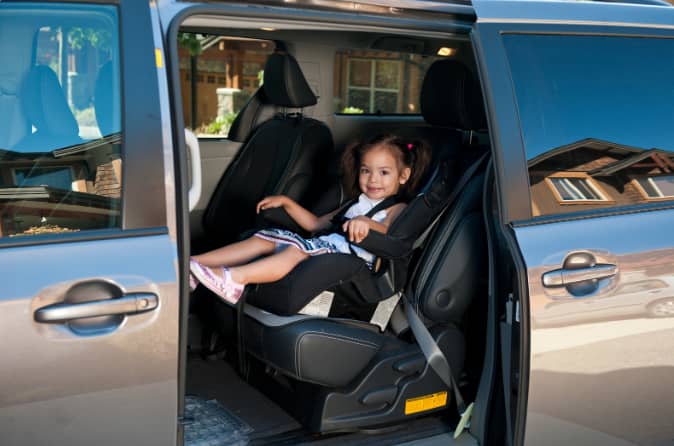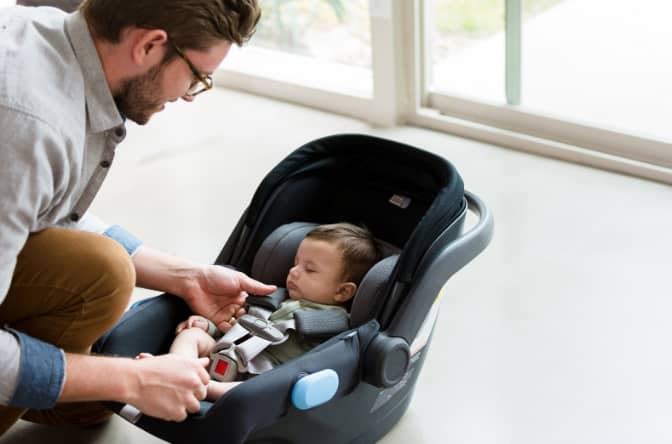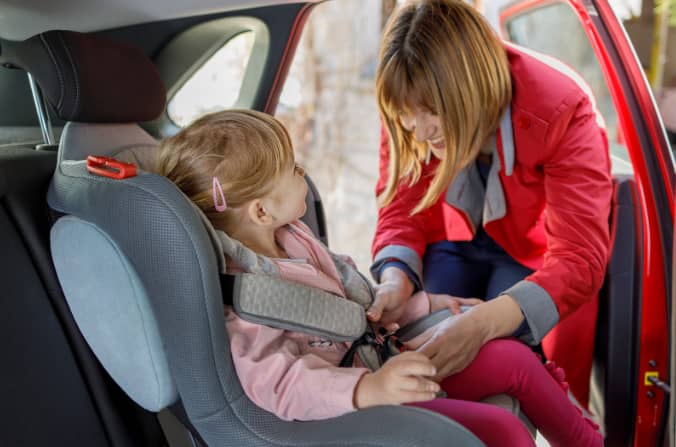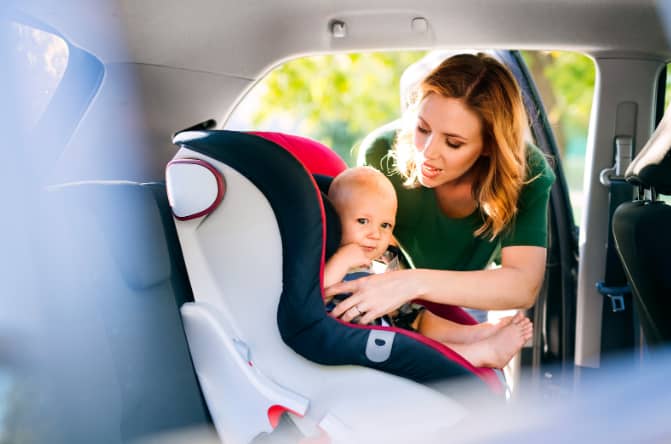Are you planning a trip but afraid of the stress of traveling with kids? Don’t worry. Here we are to surprise you and eliminate all your traveling stress. If you have a baby on your trip and go to your destination on a flight, then using a car seat is necessary. The car seat is designed to ensure your baby’s safe trip.
Car seat safety during air travel is an important thing to consider. Some safety tips and guidelines include bringing FAA-approved car seats, appropriate size car seats, and ensuring they fit in airplane seats. Also, you must ensure your car seat isn’t a booster seat, know how to install the car seat etc.
This guide will take you through every tip and guideline for using a car seat safely during your air travel. So continuously read it till the end!
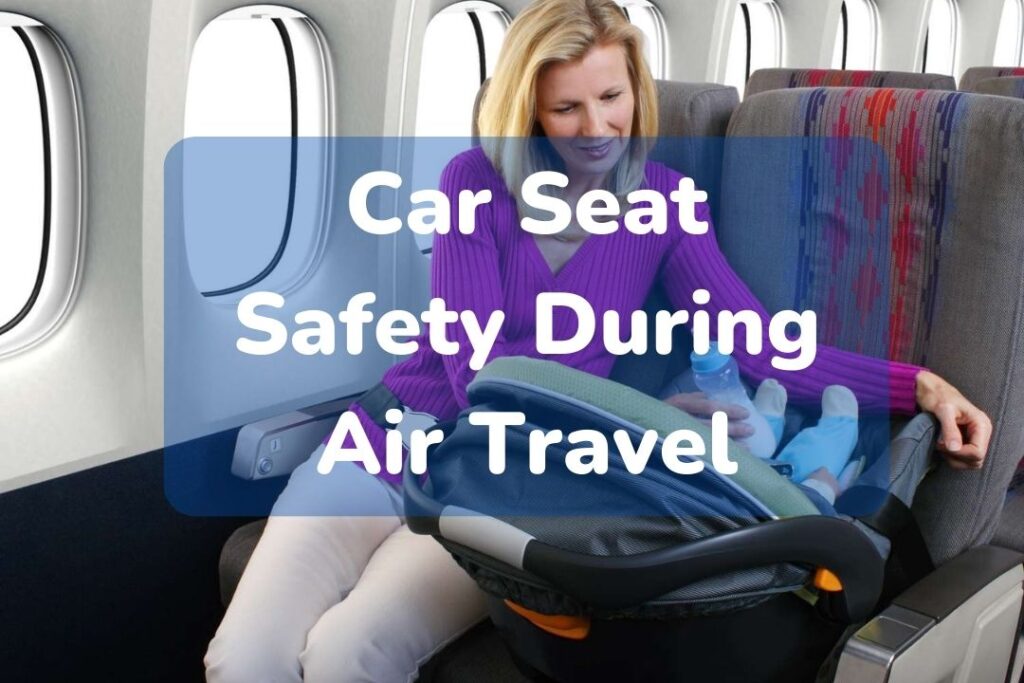
Can You Take Your Car Seat On A Plane?
Yes! You can take your car seat on the plane while you are traveling. Actually, it depends on the airline’s rules and regulations. When flying in the US, you can bring your FAA-approved car seat to the plane. The US leads the car seat-using system on airplanes.
FAA and NTSB allow and encourage you to bring your car seat for your baby to use on a flight. But the most important thing is US law protects your right to use the FAA-approved car seat on your flight.
But before bringing it, you must ensure it meets your child’s size limit. AAP and FAA both recommend that your young children use the car seat on airplanes. However, you have to use it during airplane landing and take-off.
Also, you must use it during turbulent patches when the seatbelt sign is on. One important note is that the booster seat requires a lap-shoulder seat belt. So you can use the booster seat on the airplane.
Is Flying With A Car Seat The Safest Option?
Why should you take a car seat while flying? It’s the most basic question that you may ask. It’s easy answer is if you are traveling with your baby, then flying with it is a must.
The reason is the plane’s seat belts aren’t designed or developed for your baby or their tiny bodies. In an FAA-approved restraint, the general recommendation for flying with babies under 40Ibs is to travel with either a Cares Harness or Car Seat.
However, for airplane travel which is the best car seat for your baby, it depends on your baby’s age, weight, size, height, and development level. NTSB and FAA both recommend you use the car seat for your baby on airplanes.
Car Seat Safety During Air Travel – Tips And Guidelines For Safe Air Travel With Car Seats
Traveling with a car seat won’t be complicated if you prepare sufficiently for your upcoming family trip. Here we will provide tips and guidelines to get on an airplane efficiently and safely with your car seats.
1. Bring The FAA Approved Car Seat
All US domestic flights allow you to use your car seat on an airplane. Whether you have a forward-facing toddler seat or a rear-facing infant seat, you can bring all these if they are FAA approved. When you bring your baby with a car seat, ensure the seat is AAP and FAA-approved.
Check and double-check the approved car seat list of your airline. Now the question is how you will understand whether the car seat is FAA-approved.
To understand it on your car seat, notice the writing “It is certified to use in aircraft and motor vehicles”. And if you find “Not for aircraft use” on the label, you shouldn’t use it in the plane. Before installing the car seat on the plane, ask the check-in counter to show you the label.
2. Appropriate Size Car Seat
Before bringing and installing a car seat on the airplane, ensure it is appropriate for your child’s weight, age and height. And ensure it will fit to the airplane’s seat size. If you have questions about the car seat size, contact the manufacturer or inspect your car seat’s manual.
3. Car Seat Must Be Fit In Airplane Seat
The plane-approved car seats will mostly fit perfectly in the plane’s seat. The weight and dimensions of your car seat must be on the airplane seat’s label. Verify whether the car seat matches the plane seat’s size perfectly. To check the seat size, we recommend you call the airline.
Compared to the airplane seat, you can’t use it if the car seat is too big. As a result, you will have to sit your child on your lap. However, the airlines have dedicated policies for specific planes and safe seat locations.
4. Ensure The Car Seat Isn’t A Booster Seat
You can’t use the booster’s seat on the board as they aren’t designed to fit the airplane’s lap belt. Your child will remain secure in an emergency landing or turbulence with only the 5-point harness car seat.
5. Wisely Choose Your Seat
On your reservation, if you have a small child, most airlines won’t allow you to select the seat in an exit row. So while selecting a seat on the airline, you must know the rules, especially if you haven’t added your baby yet.
If you want to use the car seat on your flight for your baby, we recommend you avoid the seats in:
- Emergency exit row
- Some angled lie-flat seats
- The rows are immediately behind or in front of exit rows.
Some More Helpful Tips For Flying with Your Car Seat Are the Following:
- Let the airline counter person check that you will travel with a baby. They can keep your next seat empty so that you can put your baby in the car seat.
- Before traveling with your car seat, give yourself a huge time ahead. You will require extra time for handling the big item car seat. Car seat handling tasks include counter offer checks, security checks, transport through the airport and many more.
- You must inform the gate boarding crew when flying with a car seat. The crew will provide enough time and space to install the car seat by arranging the board early for you.
- When it comes to using the car seat on an airplane, the life-changing thing is a compact and lightweight car seat. The lightweight car seat is easy to handle, transport, and install even in a narrow, small airplane.
- We recommend buying a travel car seat only for your flying purpose.
We suggest you remember the following few tips to avoid unpleasant encounters while flying with car seats.
- You must know how to install your car seat correctly. In fact, it’s your responsibility to learn.
- Before your flight, read the manual in advance. And in case you have any questions, you can consult with a CPST.
- Compared to convertible car seats, generally, infant car seats fit better.
- You must install your car seats on the forward-facing aircraft seats. But it does not necessarily indicate that you must buy the forward racing car seat.
You must select your travel car seat wisely because some airlines’ seats can be narrow.
Tips To Get Around The Airport With Your Car Seat
The challenging and tough part of flying with your car seat is carrying it out everywhere. Getting around the airport with your 2 or 3 years old child, bulky car seat and luggage is a really difficult part of flying.
Fortunately, there are some ways following which, without much hassle, you can transport your car seat. The following tips will make your car seat-carrying process easier at the airport.
i. Use A Car Seat Bag
A car seat bag is the easiest way to transport your car seat to the airport. However, wheels or back straps are available with the car seat bags. A car seat with strap options will keep your hands free. But you require a lightweight car seat if you aren’t strong enough to handle heavy loads.
Anyway, if you have small luggage with you, then the wheeled bag is great. Moreover, a wheel bag is best for moving heavy things easily around. Remember that against mishandling, most of the bags offer insufficient protection. Therefore look for padded bags for your car seat.
ii. Use A Car Seat Belt
Do you have a stroller, a carry-on and a car seat? If you have, use them easily. Using the car seat belt, you can attach your car seat to the stroller or carry-on. Attaching the car seat with the stroller is not hard, but it may take some time.
iii. Use The Foldable Car Seat Cart
The foldable car seat cart is the greatest option for transporting heavy car seats. The foldable cart converts your car seat into manageable wheeled luggage. And it’s easily maneuvered. Moreover, you can put more items in the foldable cart.
Once you are on board, store the car seat cart under the overhead bin or seat compartment by folding it.
Flying With A Car Seat – What Are Its Disadvantages?
Pediatricians and the FAA highly recommend bringing a car seat on a plane for your child’s safety. But before bringing your car seat on board or checking it in, you must understand its disadvantages. And those are:
- Buying a heavy and bulky car seat can be tough to carry, especially if you also have other luggage.
- When you bring a car seat with you, that means you will have less space to use. Whether you hold your children on a lap or not, it won’t make any difference, and you will have less space as the car seat will be installed with your seat.
- You are locked into your decision if you don’t want to install or use the car seat on plane. Even if you don’t use it, there is no place to store your car seat.
- If you want to install a car seat on the plane for your baby, you must also purchase a seat ticker. But what will you do if your child refuses to sit in your car seat and likes to sit on your lap more? So it’s a total waste of your money, space and energy.
- On gate checking, the security officers may protect your car seat. But to the plane, you must drag it all.
- The car seat can damage due to excessive dealing with it or during installing it. So it’s your loss of money, and you have to buy a new car seat.
How To Install Your Car Seat On An Airplane?
We have made enough discussion regarding the safety tips and guidelines for traveling with your car seat. But the most important thing is do you know how to install your car seat on the plane? Whether you use the forward-facing or rear-facing car seat, its installation steps are as follows:
Step 1: Raise your plane seat’s armrest. Then locate your car seat’s rear-facing or forward-facing belt bath.
Step 2: Now extend the plane seatbelt’s adjustable side. Through your selected car seat path, feed the extended belt. After extending the belt, buckle it up.
Step 3: Tighten your seat belt as much as possible. While putting your weight on the seat, press down when tightening to remove any slack. When tightening your car seat on the plane, ensure it isn’t moving more than an inch.
Step 4: Just like you do in your car, in the same way, place your baby in the car seat and buckle her up.
Step 5: Lower your car seat’s armrest, and its installation is done. Mission complete!
If you struggle to install your car seat on the plane, you can ask for the cabin crew’s help. Improperly installed car seats can cause your baby’s safety. So never leave it improperly installed.
Frequently Asked Questions
How Do You Handle Car Seats When Flying?
You can use a stroller to handle your car seat when flying because it’s super compact. Moreover, it fits perfectly in the overhead bin.
Is My Car Seat Safe for an Airplane?
If your car seat is FAA approved, then it’s safe for an airplane. Measure your car seat’s width and ensure it fits almost all the airplane seats. However, if you want the guarantee to use the CRS (Car seat), buy a ticket for your child.
Final Take
When traveling with your car seat, it’s always best to know car seat safety during air travel. Knowing the safety tips will reduce the stress of traveling with your child. And your trip will be incredibly memorable and rewarding.
Most importantly, the car seat ensures a safe flight for your kids. The best way to ensure your baby’s safety is to fly with an FAA-approved car seat. Usually, the car seat carrying rules and restrictions are the same across numerous US carriers.
But every airline has its own rules. So before traveling with an airline, we recommend you learn their rules and guidelines and act accordingly.

